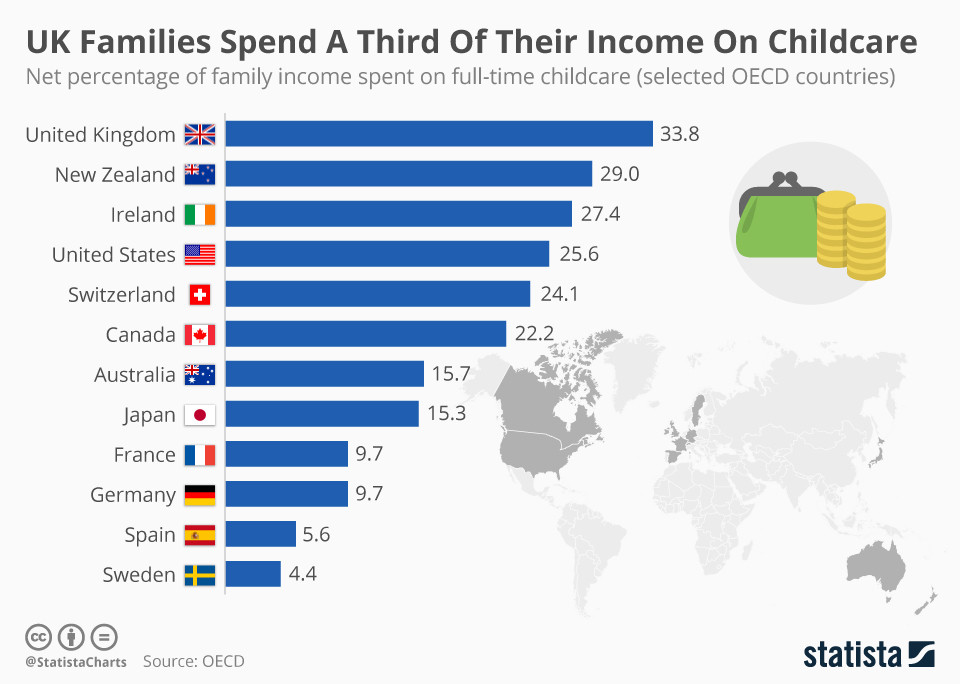These are the countries where parents spend the most on childcare

On average families spend around 13% of their income on childcare
Image: REUTERS/Kai Pfaffenbach
Stay up to date:
Social Protection
If you have children and live in the UK, you’ll probably know that the cost of childcare can be eye-wateringly high.
New figures confirm that, showing that families in the UK are spending almost three times the OECD average for childcare. That’s the highest cost in the Western world as a proportion of income.
The OECD’s Society at a Glance 2016 report looks at the price of full-time childcare in OECD countries across the world.

On average families spend around 13% of their income on childcare, but this varies dramatically. In the UK, for example, families spend over 30% of their income on childcare. The situation couldn’t be more different over in Korea, where families spend nothing on childcare because state benefits cover the cost. No other OECD country surveyed provided such comprehensive benefits.
Couples in Austria, Greece, Hungary, Portugal and Sweden all spend less than 5% of their income on childcare.
New Zealand and Ireland come just behind the UK, spending 29% and 27.4% of their incomes respectively. In the United States, expensive childcare combined with low tax reductions mean parents shoulder some of the highest costs, at 25.6%.
As the Society at a Glance 2016 report notes, these outgoings can have important consequences for both parents and society more broadly: “Such high costs are a strong deterrent to employment. It may not be financially worthwhile for both partners to work.” It also notes that “it is usually the mother who stays at home.”
Studies have shown that women across the world are more likely than men to take on unpaid care roles within the family.

To help families, and particularly women, to enter employment, the OECD recommends that childcare costs be kept to an affordable level and are made easy to access for all families.
Accept our marketing cookies to access this content.
These cookies are currently disabled in your browser.
Don't miss any update on this topic
Create a free account and access your personalized content collection with our latest publications and analyses.
License and Republishing
World Economic Forum articles may be republished in accordance with the Creative Commons Attribution-NonCommercial-NoDerivatives 4.0 International Public License, and in accordance with our Terms of Use.
The views expressed in this article are those of the author alone and not the World Economic Forum.
Forum Stories newsletter
Bringing you weekly curated insights and analysis on the global issues that matter.